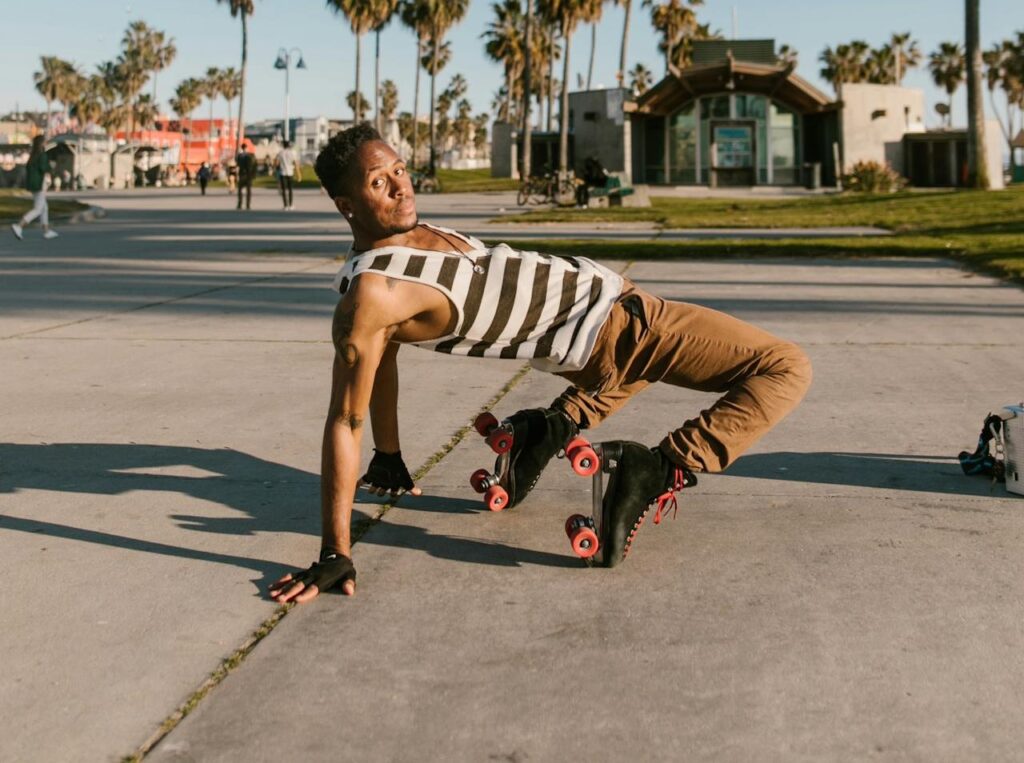In our increasingly sedentary world, tight hips have become a universal complaint. Whether you’re a desk worker, athlete, or yoga enthusiast, hip flexibility plays a crucial role in your overall mobility, posture, and even emotional well-being. This comprehensive guide presents 13 powerful hip opener exercises that will help you unlock tension, improve flexibility, and enhance your quality of life.
Understanding Hip Anatomy: The Foundation of Effective Hip Opening
Before diving into the exercises, it’s essential to understand what we’re working with. Your hips are complex joints surrounded by multiple muscle groups that work together to provide stability and mobility.
Key Hip Muscles and Their Functions
Hip Flexors (Psoas and Iliacus)
The hip flexors are responsible for lifting your thighs toward your abdomen. When tight, they can pull on your lower back, causing pain and postural imbalances.
Deep Six Lateral Rotators
These small but mighty muscles, including the piriformis, help rotate your thigh bone externally. Tightness here often contributes to sciatic pain and hip impingement.
Glutes and Hamstrings
Your powerhouse muscles for hip extension and stability. Weak glutes often accompany tight hip flexors, creating muscular imbalances.
Abductor Muscles
Located on the outer thighs, these muscles help move your legs away from your body’s centerline and provide lateral stability.
The Life-Changing Benefits of Hip Opening
Regular hip opening practice offers benefits that extend far beyond improved flexibility:
Physical Benefits
- Enhanced mobility and range of motion in daily activities
- Reduced lower back pain by releasing hip flexor tension
- Improved posture through better pelvic alignment
- Better athletic performance with increased power and stability
- Decreased risk of injury in the hips, knees, and lower back
Mental and Emotional Benefits
- Stress relief through the release of stored tension
- Improved circulation to the pelvic region
- Enhanced body awareness and mind-body connection
- Emotional release as hips often store trauma and stress
Why Hip Openers Release Emotions: The Mind-Body Connection
Hip opening isn’t just physical—it’s deeply emotional. In yoga philosophy, the hips are associated with the sacral chakra, which governs creativity, sexuality, and emotional expression. When we hold stress, trauma, or unexpressed emotions, they often manifest as physical tension in the hip area.
This is why many people experience unexpected emotional releases during deep hip opening sessions. It’s completely normal and actually beneficial for overall healing and well-being.
13 Essential Hip Opener Exercises: A Progressive Sequence
Gentle Hip Openers (Beginner-Friendly)
1. Happy Baby Pose (Ananda Balasana)
Target Areas: Hip flexors, inner thighs, lower back
Lie on your back and draw your knees toward your chest. Grab the outer edges of your feet and gently pull your knees toward your armpits. Rock side to side for a gentle massage.
Hold: 1-2 minutes
Modification: Use a strap around your feet if you can’t reach them comfortably.
2. Bound Angle Pose (Baddha Konasana)
Target Areas: Inner thighs, hip flexors
Sit with the soles of your feet together, knees falling out to the sides. Hold your feet and gently fold forward, keeping your spine long.
Hold: 2-3 minutes
Modification: Sit on a bolster or blanket for elevation if your hips are very tight.
3. Knee-to-Chest Stretch
Target Areas: Hip flexors, glutes
Lie on your back and draw one knee toward your chest while keeping the other leg extended. Switch sides.
Hold: 30 seconds each side
Progression: Pull the knee across your body for an additional IT band stretch.
4. Bridge Pose
Target Areas: Hip flexors, strengthens glutes
Lie on your back with knees bent. Lift your hips, creating a straight line from knees to shoulders.
Hold: 30 seconds to 1 minute
Progression: Try single-leg bridges for added challenge.
Intermediate Hip Openers
5. Low Lunge (Anjaneyasana)
Target Areas: Hip flexors, psoas
From a kneeling position, step one foot forward into a lunge. Lower your back knee and sink your hips forward.
Hold: 1-2 minutes each side
Modification: Place hands on blocks for support.
6. Pigeon Pose (Eka Pada Rajakapotasana)
Target Areas: Hip flexors, piriformis, IT band
From downward dog, bring one knee forward behind your wrist. Extend the back leg and square your hips.
Hold: 2-3 minutes each side
Modification: Place a bolster under your front hip for support.
7. Figure-4 Stretch (Supta Eka Pada Kapotasana)
Target Areas: Piriformis, deep hip rotators
Lie on your back, cross one ankle over the opposite knee, and thread your hands behind the supporting thigh.
Hold: 1-2 minutes each side
Progression: Perform seated for a deeper stretch.
8. Lizard Pose (Uttana Pristhasana)
Target Areas: Hip flexors, inner thighs
From a low lunge, lower both forearms to the ground inside your front foot.
Hold: 1-2 minutes each side
Modification: Keep hands on blocks if forearms don’t reach the floor.
Advanced Hip Openers
9. Fire Log Pose (Agnistambhasana)
Target Areas: Deep hip rotators, outer hips
Sit with both shins parallel, stacking one shin over the other like logs in a fire.
Hold: 2-3 minutes each side
Modification: Sit on a blanket and place a block between your shins if this is too intense.
10. Compass Pose (Parivrtta Surya Yantrasana)
Target Areas: Hip flexors, hamstrings, side body
From a seated position, extend one leg and draw the other knee toward your chest, threading your arm under the bent knee.
Hold: 30 seconds to 1 minute each side
Modification: Keep the extended leg bent if hamstrings are tight.
11. Frog Pose (Mandukasana)
Target Areas: Inner thighs, hip adductors
Come to hands and knees, then widen your knees as far as comfortable while keeping your ankles in line with your knees.
Hold: 2-5 minutes
Modification: Place a bolster under your torso for support.
12. Lotus Preparation (Ardha Padmasana)
Target Areas: Hip external rotators, ankles
Sit cross-legged and draw one foot toward the opposite hip crease, working toward placing the foot on the thigh.
Hold: 1-2 minutes each side
Caution: Never force this pose; work gradually over time.
13. King Pigeon Pose (Eka Pada Rajakapotasana II)
Target Areas: Hip flexors, quadriceps, shoulders
From pigeon pose, bend your back knee and reach back to catch your foot, opening through the front of your body.
Hold: 30 seconds to 1 minute each side
Modification: Use a strap to reach your back foot.
Essential Safety Guidelines and Best Practices
Before You Begin
- Warm up thoroughly with gentle movement and cat-cow stretches
- Listen to your body and never force a stretch
- Breathe deeply throughout each pose to facilitate release
- Stay hydrated and practice on an empty stomach when possible
Frequency and Duration Recommendations
- Beginners: 3-4 times per week, holding poses for 30 seconds to 1 minute
- Intermediate: 4-5 times per week, holding poses for 1-2 minutes
- Advanced: Daily practice with longer holds of 2-5 minutes
When to Avoid Hip Openers
- Recent hip, knee, or lower back injury
- Pregnancy (modify as needed with professional guidance)
- Acute inflammation or pain in the hip area
Props and Equipment to Enhance Your Practice
Investing in a few key props can make hip opening more accessible and comfortable:
- Yoga blocks: Support hands in lunges and forward folds
- Bolsters: Provide comfort in restorative poses
- Straps: Help reach feet in binding poses
- Blankets: Add warmth and cushioning
- Meditation cushion: Elevate hips in seated poses
Creating Your Personal Hip Opening Routine
Start with 3-4 poses from the gentle category and gradually progress. A balanced 20-minute routine might include:
- Warm-up: Cat-cow stretches (2 minutes)
- Gentle opener: Happy Baby Pose (2 minutes)
- Active stretch: Low Lunge (2 minutes each side)
- Deep opener: Pigeon Pose (3 minutes each side)
- Restorative: Bound Angle Pose (3 minutes)
- Integration: Savasana (5 minutes)
Transform Your Life Through Hip Opening
Regular hip opening practice is more than just physical exercise—it’s a pathway to greater freedom, both in your body and your life. As you release physical tension, you’ll likely notice improvements in your posture, reduced back pain, and enhanced athletic performance.
More importantly, you may discover emotional releases, increased creativity, and a deeper connection to your body’s wisdom. Remember that hip opening is a journey, not a destination. Be patient with yourself, celebrate small victories, and trust in the process.
Start your hip opening journey today with just 10 minutes of gentle stretches. Your body—and your mind—will thank you for it.
Frequently Asked Questions
Q: How long does it take to see improvements in hip flexibility?
A: Most people notice some improvement within 2-4 weeks of consistent practice. Significant changes typically occur after 2-3 months of regular hip opening work.
Q: Is it normal to feel emotional during hip opening poses?
A: Yes, absolutely. The hips store emotional tension, and it’s common to experience unexpected emotions during deep hip opening. Allow these feelings to arise and pass naturally.
Q: Can I practice hip openers if I have lower back pain?
A: Gentle hip openers can actually help alleviate lower back pain by releasing tight hip flexors. However, consult with a healthcare provider if you have chronic or severe back pain.
Q: Should I feel pain during hip opening stretches?
A: You should feel a stretch, but never sharp or shooting pain. Work within your comfortable range and back off if you experience any pain.
Q: How often should I practice hip openers?
A: For best results, practice 3-5 times per week. Daily gentle stretching is ideal, with deeper sessions 2-3 times per week.



